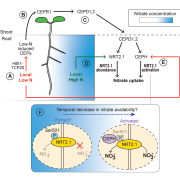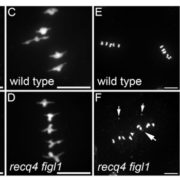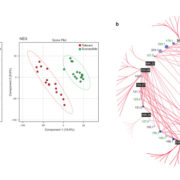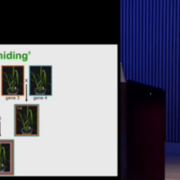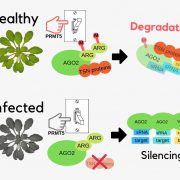Review: Challenges to improving plant growth through introduced microbes
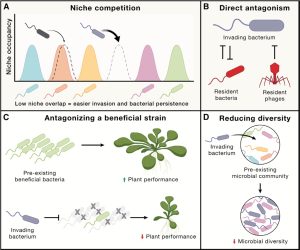 Plants are closely associated with large numbers of microbes that live in, on, and around them; these are collectively called the plant microbiota. Microbes can be pathogenic, neutral, or beneficial. Beneficial microbes might enhance nutrient uptake by the plant or suppress pathogenic microbes. There is growing interest in using introduced microbes to support plant growth, but this effort is complicated by many factors. The plant defense system is of course a big challenge, but going beyond that, interactions between microbial communities provide further difficulties. The new species needs to compete with pre-existing species, and conflicts may arise that harm not only the new ones but also other beneficial microbes. Plants apply selective pressure to the microbial communities, fostering the development of microbiomes through specific immune responses to exclude pathogenesis. The plant immune system regulates microbial balance in various manners, including hormonal signaling, immune receptor signaling and secondary metabolite production. Environmental fluctuations also pose challenges to the deployment of microbial strategies, especially factors like drought, iron deficiencies, and phosphate levels. The crosstalk between the plant immune system and other pathways, such as symbiosis and abiotic stress, further complicates this process. Although questions about how to enhance plant productivity through beneficial microbes remain, our understanding is rapidly expanding, with technologies like high-throughput assays being utilized to identify microbial traits. Innovative strategies, like using engineered microbes to carry several beneficial traits, remain to be tested in real-world scenarios. (Summary by Diwen Wang @Diwen_w) Cell 10.1016/j.cell.2023.08.035
Plants are closely associated with large numbers of microbes that live in, on, and around them; these are collectively called the plant microbiota. Microbes can be pathogenic, neutral, or beneficial. Beneficial microbes might enhance nutrient uptake by the plant or suppress pathogenic microbes. There is growing interest in using introduced microbes to support plant growth, but this effort is complicated by many factors. The plant defense system is of course a big challenge, but going beyond that, interactions between microbial communities provide further difficulties. The new species needs to compete with pre-existing species, and conflicts may arise that harm not only the new ones but also other beneficial microbes. Plants apply selective pressure to the microbial communities, fostering the development of microbiomes through specific immune responses to exclude pathogenesis. The plant immune system regulates microbial balance in various manners, including hormonal signaling, immune receptor signaling and secondary metabolite production. Environmental fluctuations also pose challenges to the deployment of microbial strategies, especially factors like drought, iron deficiencies, and phosphate levels. The crosstalk between the plant immune system and other pathways, such as symbiosis and abiotic stress, further complicates this process. Although questions about how to enhance plant productivity through beneficial microbes remain, our understanding is rapidly expanding, with technologies like high-throughput assays being utilized to identify microbial traits. Innovative strategies, like using engineered microbes to carry several beneficial traits, remain to be tested in real-world scenarios. (Summary by Diwen Wang @Diwen_w) Cell 10.1016/j.cell.2023.08.035


